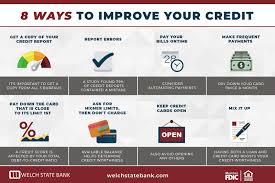
Improving your credit score in the USA is one of the most important financial steps you can take if you want to secure better loan options, qualify for credit cards with high rewards, rent an apartment, or even land certain jobs. Your credit score is essentially your financial reputation, and the higher it is, the easier it becomes to get approved for financial products at lower interest rates.
In this guide, we will explore the fastest and easiest ways to improve your credit score in the USA, along with practical steps, mistakes to avoid, and long-term strategies. Let’s dive deep into every detail.
📌 What is a Credit Score?
A credit score is a three-digit number, usually ranging between 300 and 850, that shows how reliable you are at paying back borrowed money. In the USA, the most commonly used credit score is the FICO score, calculated based on five major factors:
- Payment history (35%) – Do you pay your bills on time?
- Credit utilization (30%) – How much of your available credit are you using?
- Length of credit history (15%) – How long have you had credit accounts?
- Credit mix (10%) – Do you have different types of credit (loans, cards, mortgage)?
- New credit (10%) – How often do you apply for new credit?
The higher the score, the better your financial standing. Generally:
- 300–579 = Poor
- 580–669 = Fair
- 670–739 = Good
- 740–799 = Very Good
- 800+ = Excellent
🚀 Fast & Easy Ways to Improve Your Credit Score in the USA
1. Pay Your Bills on Time (Never Miss a Due Date)
- Your payment history makes up 35% of your credit score.
- Even one missed payment can drop your score by 60–100 points.
✅ Tip: Set up automatic payments or reminders on your phone so you never forget due dates.
2. Lower Your Credit Utilization Ratio
- Credit utilization = how much credit you use compared to your limit.
- Example: If you have a $5,000 limit and you spend $4,000, your utilization is 80% (very bad).
- Try to keep it below 30%, and ideally under 10% for the best results.
✅ Fast Fix: Pay off credit cards multiple times a month instead of waiting until the bill arrives.
3. Don’t Close Old Credit Cards
- The length of your credit history affects 15% of your score.
- Closing old accounts shortens your history and lowers your average age of credit.
✅ Keep old cards open, even if you don’t use them often. Just make small purchases occasionally.
4. Request a Credit Limit Increase
- By increasing your credit limit (and keeping your spending the same), your utilization goes down.
- Example: If your limit increases from $3,000 to $6,000, spending $1,500 now looks like 25% usage instead of 50%.
✅ Ask your bank for a limit increase after showing consistent on-time payments.
5. Dispute Errors on Your Credit Report
- Sometimes credit reports have mistakes like:
- Wrong account balances
- Payments marked late even if paid on time
- Accounts that don’t belong to you
✅ You can request a free credit report from AnnualCreditReport.com (once a year).
✅ If you find errors, file disputes with Equifax, Experian, and TransUnion.
6. Pay Off Debt Strategically
Two popular methods:
- Debt Snowball Method: Pay smallest debts first for motivation.
- Debt Avalanche Method: Pay high-interest debts first to save money.
✅ Both methods lower your credit utilization and improve your score over time.
7. Become an Authorized User
- If you have a family member or close friend with a high credit limit and good history, ask them to add you as an authorized user.
- Their good history reflects on your credit report, giving your score a quick boost.
8. Avoid Too Many Hard Inquiries
- Every time you apply for a new credit card or loan, a hard inquiry is added to your report.
- Too many inquiries = lower score.
✅ Apply for new credit only when necessary.
9. Use a Secured Credit Card
- If your score is very low, consider a secured credit card.
- You deposit money (like $200–$500), and that becomes your credit limit.
- Use it responsibly, pay on time, and after 6–12 months, your score will improve.
10. Diversify Your Credit Mix
- Having different types of credit (like credit cards, personal loans, car loans, mortgages) shows lenders you can handle different responsibilities.
- Don’t borrow just for the sake of it, but if you need a loan, it can improve your score in the long run.
⚡ Extra Pro Tips to Boost Your Credit Score Quickly
- Pay down high balances before the statement date (not just the due date).
- Set up automatic payments to avoid late fees.
- Negotiate with creditors to remove negative marks after paying off debt (called “pay for delete”).
- Use apps like Credit Karma, Experian Boost, or Mint to track your credit.
- Avoid payday loans—they hurt your credit in the long run.
⏳ How Long Does It Take to Improve Your Credit Score?
- 30 Days: Small improvements if you pay down balances and fix errors.
- 3–6 Months: Noticeable growth if you keep utilization low and pay on time.
- 12+ Months: Strong improvements if you maintain good habits.
✅ Final Thoughts
Improving your credit score in the USA doesn’t happen overnight, but with the right strategies, you can see results faster than you think. Focus on paying bills on time, keeping your utilization low, disputing errors, and building a solid credit history.
Remember: A good credit score = lower interest rates, better loan approvals, and stronger financial freedom.